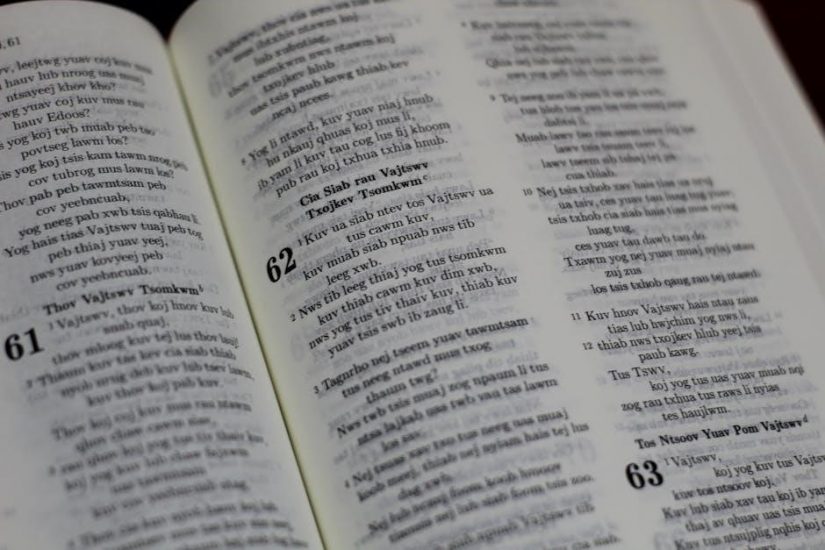Bible color coding is a tool for marking passages, helping readers identify key themes, doctrines, and personal insights. It enhances Bible study by making scripture visually engaging and organized, allowing believers to track themes like God’s promises, prayers, or prophecies. Using vibrant colors creates a meaningful connection with the text, making studies more interactive and memorable; This method is both practical and inspiring, fostering deeper spiritual understanding and engagement with God’s Word.
What is Bible Color Coding?
Bible color coding is a practical method of marking Bible passages using colors to highlight specific themes, doctrines, or personal insights. It involves selecting colors to represent different topics, such as God’s promises, commands, or prayers, and applying them to relevant verses. This visual system creates a personalized map of the Bible, making it easier to identify recurring themes and doctrines. By using highlighters or colored pens, individuals can organize their thoughts and reflections, enhancing their engagement with Scripture. Bible color coding is adaptable to personal preferences, allowing users to create a system that resonates with their study goals. It transforms the Bible into a vibrant, interactive tool for deeper spiritual understanding and connection with God’s Word.
Why Use a Bible Color Coding Guide?
A Bible color coding guide offers a structured approach to organizing and interpreting Scripture, making Bible study more engaging and effective. By assigning specific colors to themes like faith, love, or prophecy, users can quickly identify recurring concepts throughout the Bible. This method enhances memory retention, as vibrant colors create visual associations with key verses. Additionally, a guide helps maintain consistency, preventing the system from becoming overwhelming. It also serves as a valuable resource for teaching others how to implement color coding in their own studies. Ultimately, a Bible color coding guide transforms study sessions into a creative and meaningful experience, fostering a deeper connection with God’s Word and enriching spiritual growth.
Benefits of Color Coding for Bible Study
Color coding enhances Bible study by providing visual organization and clarity, making it easier to track themes, doctrines, and personal insights. This method allows readers to quickly identify recurring concepts, such as God’s promises or prayer, across different passages. It also aids in memory retention, as vibrant colors create lasting visual associations with key verses. Additionally, color coding adds a creative dimension to study sessions, making them more engaging and enjoyable. This approach fosters a deeper connection with Scripture, helping believers reflect on their spiritual journey and apply biblical truths to everyday life. By transforming study into a visually engaging experience, color coding empowers individuals to explore and understand God’s Word more effectively.

Choosing the Right Colors and Tools
Choosing the right colors and tools is essential for Bible color coding. Select versatile highlighters and durable Bible marking tools to enhance your study experience. Personalize your palette for meaningful connections with Scripture.
Best Highlighters for Bible Color Coding
When selecting highlighters for Bible color coding, choose tools that are gentle on pages to avoid bleeding or smudging. Opt for vibrant, light-fast colors that maintain clarity. Dual-tip highlighters offer versatility for both underlining and coloring. Acid-free and archival-quality options ensure longevity of your markings. Popular brands among Bible enthusiasts are known for their blendable inks and durability. Using a consistent set of highlighters helps maintain a cohesive look in your Bible study. Experiment with different tip sizes to achieve precise or broad strokes, enhancing your ability to emphasize key verses and themes effectively. This ensures your Bible remains a treasured resource for years of study.
Recommended Bible Marking Tools
Essential tools for Bible marking include high-quality pens, highlighters, and tabs. Fine-tip pens like Micron or Prismacolor are ideal for writing notes without bleeding. Color-coded tabs help organize sections, making navigation easier. Stickers and washi tape can highlight themes or verses visually. Erasers are useful for correcting mistakes. Bible journaling kits, complete with stencils and stamps, add creativity to your study. Digital tools, such as Bible apps, offer virtual marking options. Using these tools enhances your ability to engage deeply with Scripture, making your Bible a personalized resource for worship and reflection. They help organize thoughts, emphasize key passages, and create a meaningful connection with the text.
How to Select a Color Palette
Selecting a color palette for Bible color coding involves choosing hues that resonate with your spiritual journey and maintain consistency. Start by identifying themes or categories, such as God’s promises, prayer, or prophecy. Assign a unique color to each, ensuring they are visually distinct. Bright colors like yellow or green can highlight joy or new life, while deeper tones like blue or purple may represent wisdom or royalty. Avoid overcomplicating by limiting your palette to 6-8 colors. Create a reference chart to track your choices, ensuring consistency across your Bible. This personalized approach helps you visually connect with scripture, making your study more engaging and meaningful. Your palette is a tool to deepen your understanding and reflection on God’s Word.
Understanding Bible Color Coding Systems
Bible color coding systems are structured approaches to organizing and interpreting scripture through color, helping readers identify themes and doctrines, and making study more organized and visually engaging.
Popular Bible Color Coding Methods
Popular Bible color coding methods include thematic, character-based, and personalized systems. Thematic coding assigns colors to specific themes like faith, sin, or grace, while character-based coding highlights actions of key figures. Many use pre-defined color palettes, associating colors like blue for God’s promises or green for spiritual growth. Others create unique systems, linking colors to personal reflections or doctrines. These methods enhance study by visually connecting related verses, making it easier to trace themes across scripture. They also encourage engagement and deepen understanding, helping readers interact with the text on a deeper level. By organizing thoughts visually, color coding fosters a meaningful and organized approach to Bible study, enriching spiritual connection and comprehension.
Thematic vs. Character-Based Coding
Thematic and character-based coding are two distinct approaches to Bible color coding. Thematic coding focuses on assigning colors to specific themes or doctrines, such as salvation, faith, or prayer. This method helps readers trace recurring ideas throughout the Bible, enhancing thematic understanding. Character-based coding, on the other hand, emphasizes the actions and roles of individuals like Jesus, Paul, or David, using colors to highlight their specific interactions and teachings. Both methods offer unique benefits, with thematic coding aiding in doctrinal study and character-based coding enriching narrative analysis. By choosing one or combining both, Bible students can tailor their study to their preferred focus, making their color coding system both personal and effective for deeper spiritual insight and engagement.
How to Create a Personalized Coding System
Creating a personalized Bible color coding system begins with identifying the themes or characters most significant to your study. Start by listing key topics, such as faith, prayer, or specific biblical figures, and assign a unique color to each. Consider using a color palette that resonates with you, ensuring clarity and visual appeal. Next, develop a reference chart or key to keep track of your color assignments, ensuring consistency. You can also incorporate symbols or patterns for additional depth. Experiment with different highlighters or tools to find what works best for your Bible. Remember, your system should reflect your personal connection to the Scripture, making it both functional and meaningful. Over time, refine your approach as you discover new insights or themes in your study.

Organizing Your Bible with Color Codes
Organizing your Bible with color codes enhances study efficiency by visually categorizing themes, doctrines, and verses. Use vibrant tabs for book identification and consistent color marking for easy navigation and reference.
Using Color-Coded Tabs for Book Identification
Color-coded tabs are an excellent way to organize and quickly identify Bible books. By assigning specific colors to different sections, such as the Old Testament, New Testament, Psalms, or Proverbs, you can navigate effortlessly. This system reduces time spent searching for specific books, making study sessions more efficient. Tabs can also be labeled with abbreviations or symbols for clarity. Using a consistent color key ensures that each book is easily recognizable at a glance. This method not only enhances visual appeal but also streamlines your Bible study process, helping you focus on the content rather than the search. Over time, the tabs become a helpful reference, making your Bible more accessible and user-friendly.
How to Mark Verses with Color Codes
Marking verses with color codes enhances Bible study by visually highlighting important themes or verses. Start by selecting a verse or passage that resonates with you. Choose a color from your coding system that aligns with the verse’s theme, such as green for spiritual growth or blue for promises. Gently apply the highlighter across the text, ensuring even coverage. For intricate details, use fine-tip markers or colored pencils. Avoid overlapping colors to maintain clarity. After marking, jot down reflections or cross-references in the margins. This method creates a visually engaging and organized study resource, making it easier to revisit key verses. Over time, your color-coded Bible becomes a personalized map of your spiritual journey, fostering deeper connection and reflection.
Creating a Color Coding Chart
A color coding chart is a vital tool for organizing and referencing your Bible study system. It serves as a quick guide to understanding the meaning behind each color and symbol used. To create one, start by listing your chosen colors and assign specific themes or categories to each, such as red for Jesus’ words or green for spiritual growth. Include symbols if you use them, like a cross for salvation or a dove for the Holy Spirit. Display the chart in the front of your Bible or on a separate page for easy access. This chart ensures consistency in your marking and helps others understand your system. Over time, it becomes a personalized key to your spiritual journey, making Bible study more organized and meaningful.

Advanced Bible Color Coding Techniques
Advanced techniques involve layering colors, combining symbols, and integrating journaling for deeper study. These methods enhance understanding and engagement, offering a richer, more immersive experience of scripture.
Layering Colors for Deeper Meaning
Layering colors in Bible color coding adds depth to your study by connecting related themes across different passages. For example, using a base color for a central theme like “God’s love” and layering a secondary color for “promises” creates a visual link. This technique helps trace theological concepts throughout Scripture, revealing how ideas interconnect. By applying multiple hues, you can distinguish primary and secondary themes, enhancing your ability to follow complex narratives or doctrines. Layering also allows for a more nuanced understanding, making your study more engaging and insightful. This method encourages careful reflection and fosters a richer appreciation of the Bible’s layered meanings.
Using Symbols in Combination with Colors
Combining symbols with colors in Bible color coding enhances your study by adding visual cues for specific themes or ideas. Symbols like arrows, stars, or crosses can highlight key concepts such as prophecy fulfillments, divine promises, or spiritual truths. For example, using a crown symbol for kingship or a heart for love adds depth to your color-coded system. This dual approach helps in quickly identifying patterns and relationships between verses. Symbols also personalize your study, making it more engaging and memorable. By integrating both colors and symbols, you create a visually rich and layered system that enriches your understanding of Scripture and facilitates easier reference during reflection or teaching.
Integrating Color Coding with Bible Journaling
Integrating color coding with Bible journaling creates a beautiful and meaningful way to engage with Scripture. Journaling Bibles often feature wide margins, perfect for adding notes, artwork, or doodles alongside color-coded verses. By combining color coding with journaling, you can visually represent themes, emotions, or spiritual insights, making your Bible a personalized reflection of your faith journey. For example, you might use a specific color for grace, another for hope, and embellish with artwork that resonates with the passage. This creative approach deepens your connection to the Word and transforms your Bible into a treasured keepsake. Many journaling communities inspire unique styles, encouraging believers to express their faith artistically while studying. This fusion of color and creativity enhances both worship and understanding, making Bible study a joyous and expressive experience.

Practical Tips for Effective Bible Color Coding
Bible color coding enhances study by organizing themes visually, making it easier to track key concepts and doctrines. Start with a simple system, use consistent colors, and gradually expand as you grow in understanding.
Starting with a Simple Color Coding System
Starting simple is key to effective Bible color coding. Begin by choosing a few colors linked to major themes like God’s promises or commands. Use highlighters or colored pencils to mark verses. For example, blue for promises, red for Jesus’ words, and green for spiritual growth. This approach helps build a foundation without overwhelming. As you grow, expand your palette. Consistency is crucial; stick to your initial choices to avoid confusion. Document your system in a notebook or chart for easy reference. This method ensures clarity and focus, enriching your Bible study journey and making scripture more relatable. Simplicity fosters deeper engagement and understanding.
How to Avoid Overcomplicating Your System
Keeping your Bible color coding system simple is essential for effective use. Start with a limited color palette and clearly define each color’s purpose to avoid confusion. Avoid introducing too many colors or categories too quickly, as this can lead to overwhelm. Instead, gradually expand your system as you become more comfortable. Establishing clear boundaries for each color’s meaning ensures consistency. AVOID using too many similar shades that may blend together. Additionally, resist the urge to overthink or redefine your system frequently. Stick to your initial plan and refine it only when necessary. Simplifying your approach allows you to focus on the scripture rather than the process, making your Bible study more meaningful and productive.
Tips for Consistency in Color Coding
Maintaining consistency in your Bible color coding system is crucial for effective study. Start by creating a color chart or key to reference, ensuring each color represents a specific theme or category. Use the same colors for similar themes across different books of the Bible to avoid confusion. Regularly review and adjust your system to ensure longevity and clarity. Test colors on a scrap page first to confirm they won’t bleed or smudge. Stick to your defined palette and resist the urge to add unnecessary colors or rules. Consistency strengthens the visual cues, making your Bible study more intuitive and impactful over time. By staying organized and intentional, your color coding system will remain a valuable tool for deeper spiritual understanding.

Real-Life Examples of Bible Color Coding
Many believers use color coding to track themes like prayer, prophecy, or God’s promises. Others highlight doctrines or character studies, creating a visually engaging Bible study aid.
Case Studies of Successful Bible Color Coding
Many individuals have shared their inspiring journeys with Bible color coding. One believer used a nine-color system to highlight themes like God’s promises, prayer, and prophecy, creating a vibrant study aid. Another organized their Bible with color-coded tabs for each book, making navigation effortless. A group of Bible journalers developed a shared palette to track doctrines, fostering community and deeper understanding. These examples demonstrate how personalized systems can enhance engagement and clarity. By implementing such methods, individuals have reported improved retention of scripture and a richer connection to God’s Word. These success stories highlight the versatility and effectiveness of Bible color coding in personal and group study settings.
How Others Use Color Coding in Their Studies
Many Bible enthusiasts have embraced color coding as a transformative study tool. Some use vibrant highlighters to track recurring themes like faith, prayer, or prophecy, while others employ color-coded tabs to organize books of the Bible. A popular approach involves creating a personalized palette, such as assigning green to verses about growth or red to Jesus’ words. Communities often share their systems online, inspiring others to adapt or create their own. This method not only enhances memorization but also makes study sessions more engaging and interactive. By visualizing spiritual truths through color, believers deepen their connection to Scripture and uncover new layers of meaning in their faith journey.
Inspiration from Bible Journaling Communities
Bible journaling communities have become a vibrant source of inspiration for color coding enthusiasts. Many share their creative systems online, showcasing how they use highlighters, stickers, and tabs to enhance their Bible studies. These communities often provide free printables, such as color-coded charts or tabs, to help others organize their Bibles. Inspiration can be found in the way members assign specific colors to themes like faith, prayer, or prophecy, making Scripture more visually engaging. By sharing their techniques, these communities encourage believers to personalize their study methods and deepen their spiritual connection. The collaborative spirit fosters creativity, helping individuals develop unique ways to interact with God’s Word through art and color.
Troubleshooting Common Issues
Common issues like smudging or bleeding can be fixed with quality tools. Mistakes can be corrected using erasers or by layering new colors thoughtfully, ensuring a neat appearance.
Fixing Mistakes in Your Color Coding
Fixing mistakes in your Bible color coding is easy with the right tools. Use a high-quality eraser to gently remove minor smudges or unwanted marks. For more significant errors, apply correction tape to cover the area before reapplying color. Layering new colors over mistakes can also blend them seamlessly. Always test your tools on a separate page first to ensure they won’t damage the Bible paper. If a page becomes too marked up, consider starting over, though this is rarely necessary. Remember, mistakes are part of the process and can often be corrected with patience and care. Keep your Bible organized and beautiful by addressing errors promptly and thoughtfully.
How to Reorganize Your Color Coding System
Reorganizing your Bible color coding system can breathe new life into your study routine. Start by evaluating your current setup to identify areas for improvement. Simplify by consolidating similar themes or colors to reduce complexity. Update your color chart to reflect these changes, ensuring consistency across your Bible. If needed, reapply colors to previously marked verses to align with your new system. Consider reorganizing tabs or stickers to better categorize books or themes. Regularly review and adjust your system to accommodate deeper understanding or new study focuses. This process keeps your Bible study dynamic and tailored to your spiritual growth, ensuring clarity and effectiveness in your color coding journey.
Solving the Problem of Bleeding or Smudging
Bleeding or smudging can be frustrating when color coding your Bible. To address this, use high-quality, bleed-resistant highlighters designed for thin paper. Test markers on a scrap page first to ensure they don’t bleed. Apply gentle, even strokes and avoid heavy pressure; Allow ink to dry before touching or flipping pages. Place a tissue or blotting paper between pages after marking to absorb excess ink. Consider using colored pencils for detailed work, as they are less likely to bleed. Store your Bible in a dry, cool environment to prevent smudging. Regularly clean your highlighters to maintain performance. By taking these precautions, you can preserve your Bible’s integrity and enjoy a vibrant, smear-free color coding system that enhances your study experience.
Bible color coding is a transformative tool for enhancing your spiritual journey. By organizing themes and verses visually, it deepens engagement and understanding. To continue improving, explore new techniques like layering colors or combining symbols. Experiment with different palettes and systems to find what resonates with you. Stay consistent, and don’t hesitate to adapt your method as you grow in your study. Seek inspiration from others but make your system personal. Remember, the goal is to draw closer to God’s Word. With patience and practice, your color coding will become a cherished part of your Bible study, offering fresh insights and fostering a deeper connection with scripture.
Final Thoughts on Bible Color Coding
Bible color coding is a powerful, personal, and creative way to deepen your engagement with Scripture. It transforms study into a visually meaningful experience, helping you track themes, doctrines, and personal reflections. By assigning colors to specific topics, you create a system that reflects your unique spiritual journey. This method fosters consistency, inspiration, and a deeper connection to God’s Word. Embrace the flexibility of color coding—experiment with palettes, layer meanings, and adapt as you grow. Share your system with others to inspire and learn from their approaches. Ultimately, Bible color coding is not just a tool but a joyful expression of faith, helping you uncover new insights and cherish your time in the Bible.
How to Continue Improving Your System
To continually enhance your Bible color coding system, seek inspiration from Bible journaling communities and resources. Experiment with new techniques, such as layering colors or incorporating symbols, to add depth to your study. Regularly review and adjust your color assignments to ensure they remain meaningful and relevant. Consider revisiting your system annually to reflect spiritual growth and new insights. Share your methods with others to gain fresh perspectives and discover innovative approaches. Stay open to adapting your system as you explore different study methods or themes. By refining and evolving your color coding, you’ll deepen your engagement with Scripture and enrich your spiritual journey.
Resources for Further Learning
Expand your knowledge of Bible color coding by exploring online tutorials, printable guides, and Bible journaling communities. Websites like Christianbook.com offer tools and resources to enhance your study. Social media platforms feature vibrant communities sharing tips and inspiration. YouTube channels provide step-by-step tutorials on creating effective color systems. Additionally, downloadable templates and workbooks can help you organize your approach. Consider investing in Bible study apps that offer color-coding features or guided lessons. Engaging with these resources will equip you with fresh ideas and techniques to deepen your biblical understanding and refine your color coding practice. Continuous learning and adaptation will keep your study dynamic and meaningful.
